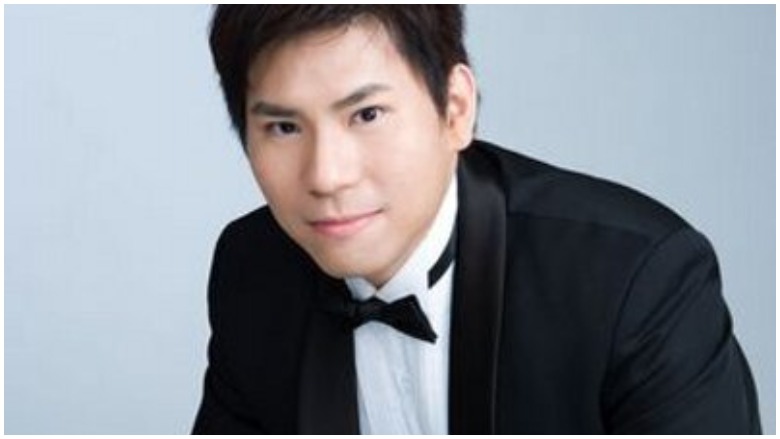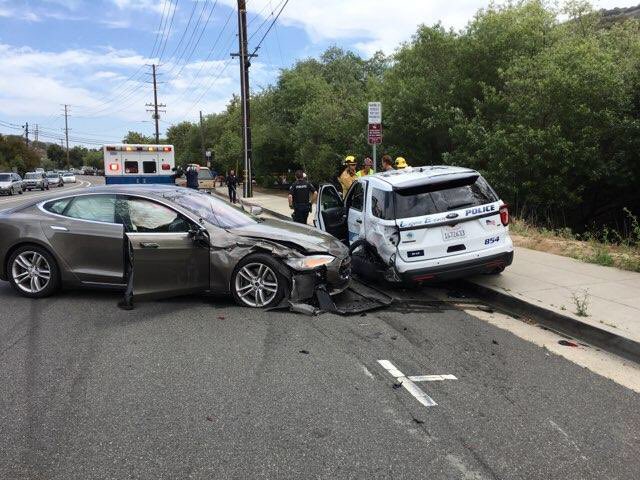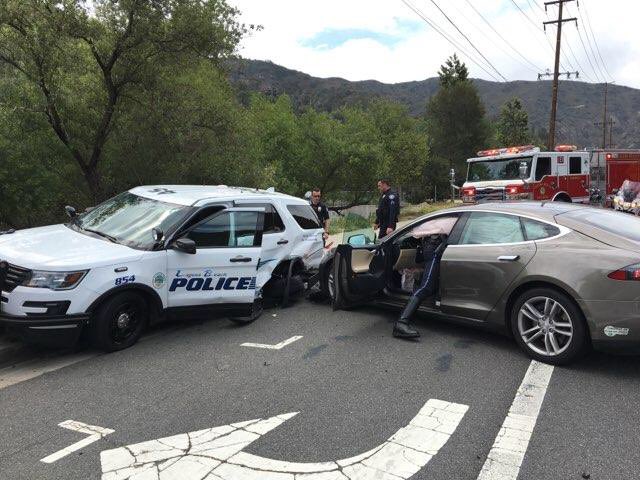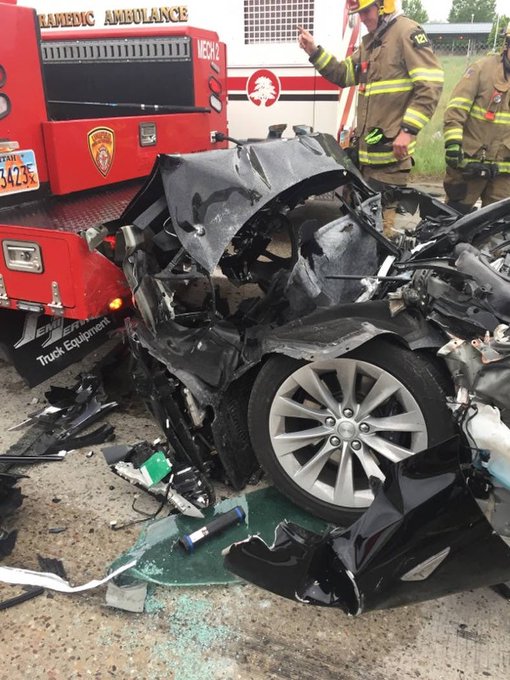
Twitter Software engineer and married father of two, Walter Huang, 38, was killed when his $87,000 Tesla X crashed while in autopilot mode. Tesla blamed Huang. The NTSB says the car sped up right before crash.
Walter Huang was driving his Tesla X in autopilot mode when it crashed into a concrete barrier in March.
Tesla and founder Elon Musk blamed Huang for the collision on US Highway 101 in Mountain View, California.
But the National Transportation Safety Board’s June 7 report on the collision that claimed Huang’s life says seconds before impact, the vehicle ceased to follow the car in front of it and instead veered left then sped up from 62 mph to 70.8 mph and the car made no breaking attempt or evasive steering to avoid slamming into a concrete median. The speed limit is 65 and the car had previously maintained that speed until the fateful last three seconds, the NTSB report found.
Here’s what you need to know:
1. Huang Was a Married Father of Two & Was an Apple Software Engineer
When Walter Huang, 38, got a gig at Apple, he celebrated in a major way. He bought a 2017 Tesla X in blue metallic. Retail on that car was around $87,000.
Huang was previously a software engineer at Electronic Arts Visceral Games for 13 years and was involved in developing Dead Space, The Godfather, the Dead Spacetrilogy, Dante’s Inferno, and Battlefield: Hardline. When Visceral shuttered in 2017, Huang joined Apple as a system and development tools engineer.
Huang was a father of two, Tristan and Trinity.
A GoFundMe page was set up for the Huang family. Many former EA employees and others shared condolences. One said he had as similar issue with the exact same car.
2. Huang’s Wife Sevonne Says Her Husband ‘Complained’ About The Autopilot on His Car & She’s Suing Tesla
Huang said her husband told her several times that the car’s autopilot didn’t work correctly “near the very same barrier where he crashed and died,” it was reported. Inexplicably, the car steered toward the same barrier previously, local news reported.
When she heard on the news there was a crash and checked her husband’s car locator app, she saw there was a problem. Then, on the news she saw the same median barrier, in the same spot and the metallic blue Tesla X.
“I just want this tragedy not to happen again to another family,” she told ABC7 news.
3. Tesla Said Huang Wasn’t Paying Attention & Ignored Warnings. The NTSB Report Says Otherwise

NTSB /S. EnglemanView of US-101 depicting Tesla postcrash fire and remains of Tesla after initial fire was extinguished.
Tesla issued at least three statements about the crash but the one in mid-April was its clearest to date that Huang was at fault. Saying it was “very sorry for the family’s loss,” it stated Huang wasn’t “paying attention,” had ignored warnings and did not have his hands on the wheel.
“The fundamental premise of both moral and legal liability is a broken promise, and there was none here. Tesla is extremely clear that Autopilot requires the driver to be alert and have hands on the wheel. This reminder is made every single time Autopilot is engaged. If the system detects that hands are not on, it provides visual and auditory alerts. This happened several times on Mr. Huang’s drive that day.”
Tesla maintained that its autopilot “resulted in 40% fewer crashes and it has improved substantially since then. The reason that other families are not on TV is because their loved ones are still alive.”
But Huang family lawyer Mark Fong told local media back in April that Tesla has “tried to blame the victim here.”
“It took him out of the lane that he was driving in, then it failed to break, then it drove him into this fixed concrete barrier. We believe this would’ve never happened had this Autopilot never been turned on,” he said.
4. The NTSB Was Not Happy With Tesla When it Leaked Investigation Details to Bolster Its Stance

The Tesla logo appears on a brand new Tesla Model S on August 2, 2017 in Corte Madera, California.
Tesla released a statement on its website: “After the logs from the computer inside the vehicle were recovered, we have more information about what may have happened.” Using NTSB data, Tesla said they’d found Huang received warnings. He did, 15 minutes before the crash. They reported he did not have his hands on the wheel six seconds before the crash. The NTSB was not thrilled given they were in the middle of the investigation and that information was introductory. NTSB spokesperson Christopher T O’Neil told The Guardian the agency was “unhappy with the release of investigative information by Tesla.”
The June 7 NTSB investigation preliminary report shows the following:
-The Autopilot system was engaged on four separate occasions during the 32-minute trip, including a continuous operation for the last 18 minutes 55 seconds prior to the crash.
-During the 18-minute 55-second segment, the vehicle provided two visual alerts and one auditory alert for the driver to place his hands on the steering wheel. These alerts were made more than 15 minutes prior to the crash.
-During the 60 seconds prior to the crash, the driver’s hands were detected on the steering wheel on three separate occasions, for a total of 34 seconds; for the last 6 seconds prior to the crash, the vehicle did not detect the driver’s hands on the steering wheel.
-At 8 seconds prior to the crash, the Tesla was following a lead vehicle and was traveling about 65 mph.
-At 7 seconds prior to the crash, the Tesla began a left steering movement while following a lead vehicle.
-At 4 seconds prior to the crash, the Tesla was no longer following a lead vehicle.
-At 3 seconds prior to the crash and up to the time of impact with the crash attenuator, the Tesla’s speed increased from 62 to 70.8 mph, with no pre-crash braking or evasive steering movement detected.
5. Media Attention on Tesla Crashes & Tesla AutoPilot Technology Has Musk Rankled & Lashing Out
On May 29 it was reported that a Tesla in autopilot smashed into a parked police SUV in Laguna Beach. The driver was hurt and the cars both totaled.
On May 11, in South Jordan, Utah, a Tesla S on autopilot crashed into a firetruck. Dasy later Tesla blamed the driver for the crash and the NTSB opened an investigation.
Then Slate posted the double negative-headlined piece that spared no feelings: “Tesla’s Autopilot system doesn’t kill people.* Journalists who write about Tesla’s Autopilot system kill people,” Will Oremus wrote adding that’s what Musk thinks anyway and said as much in a May call with investors, a meeting that might be otherwise be rather rote, “took a left turn when Musk cut short the Q&A, deeming their questions about Tesla’s finances ‘boring’ and ‘bonehead”’and taking questions instead from a 25-year-old YouTuber who had tweeted at him on Monday. As Tesla’s stock plunged in after-hours trading, Musk detoured into a Trumpian rant—yes, another one—against the dishonest media.”
A statement from Tesla on the NTSB findings in the March crash was not immediately available.






